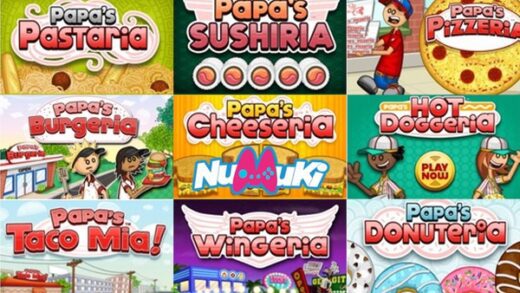Introducing children to money management early can set the stage for a lifetime of financial responsibility. Fortunately, kids can learn about budgeting, saving, spending, and making smart choices in a fun and engaging way.
This guide explores the best games for teaching money concepts to kids, making it easy for parents and educators to promote financial literacy for children without overwhelming them.
By incorporating play into learning, these money games make abstract ideas tangible and understandable, especially for young learners.
Why Financial Literacy Matters for Children
Teaching kids about money isn’t just about knowing what coins and bills are worth. It’s about helping them understand value, decision-making, and consequences. By learning financial concepts early, children develop:
- Smart spending habits
- Goal-setting skills
- Critical thinking and planning
- Confidence in handling real-life transactions
Through interactive games, children not only enjoy themselves but also absorb key lessons about everyday financial decisions.
Board Games That Build Money Skills
1. Monopoly Junior
This simplified version of the classic game introduces children to the concept of money exchange, budgeting, and property management. It’s tailored for younger players with quicker playtime and easier rules.
Why it works:
- Teaches basic transactions and value comparison
- Encourages math practice with counting and simple addition
2. The Allowance Game by Lakeshore
In this game, kids earn money for completing tasks like mowing the lawn or helping with chores and then decide how to spend or save it.
Skills gained:
- Budgeting choices
- Saving vs. spending
- Learning from financial consequences
Digital and App-Based Money Games
1. Peter Pig’s Money Counter (by Visa)
Designed for ages 5–8, this interactive app teaches kids to recognize coins and count money. With fun visuals and instant feedback, it’s both educational and entertaining.
Key benefits:
- Improves coin recognition
- Introduces saving concepts
2. Bankaroo
This virtual bank app is ideal for older kids who are beginning to grasp the value of savings goals. It lets them track allowances, set saving goals, and manage virtual money.
Features:
- Budget tracking
- Goal setting for toys, events, or savings
DIY and Roleplay Games for Hands-On Learning
1. Grocery Store Roleplay
Set up a pretend store using play money and household items. Let your child be the cashier or the shopper. This game mirrors real-life shopping experiences and introduces kids to price comparison and budgeting.
What it teaches:
- Price awareness
- Basic arithmetic and change-making
- Prioritizing needs over wants
2. Save, Spend, Share Jars
Use three labeled jars to divide a child’s allowance or gift money. Kids learn the importance of balancing their finances—saving for future needs, spending responsibly, and giving to others.
Lesson highlights:
- Visual understanding of money division
- Establishes early charitable habits
Classroom and Group Games That Encourage Collaboration
1. Money Bingo
This classroom favorite is an engaging way to teach currency recognition. Each square features coins or dollar amounts, and students mark off the correct value as it’s called out.
Educational outcome:
- Visual learning reinforcement
- Helps with speed and accuracy in counting
2. Budget Challenge
Create teams and give them a fixed budget to plan a party, vacation, or event. Provide price lists for decorations, food, and activities. The challenge encourages teamwork, smart spending, and planning.
Skills developed:
- Budgeting
- Decision-making and compromise
- Real-world financial application
Recommendation
Best Roleplay Games for Kids Aged 5–9 to Build Imagination
Best Alphabet Games for Preschoolers Learning A–Z
Best Science Games for Kids Aged 4–8 That Make Learning Fun
Best Shape Learning Games for Toddlers Aged 2–4
Top Farm-Themed Games for Kids Aged 3–7
FAQ: Games for Teaching Money Concepts to Kids
Q1: At what age should children start learning about money?
A1: Children can begin learning basic money concepts as early as age 4 or 5. Start with coin recognition and gradually introduce spending, saving, and budgeting.
Q2: Are digital money games effective for teaching financial literacy?
A2: Yes. Digital games like Bankaroo and Peter Pig’s Money Counter are great tools for reinforcing money concepts through interactive, child-friendly platforms.
Q3: How do I make money lessons fun for my child?
A3: Use roleplay, DIY games, and engaging board games. Mixing fun with real-life scenarios helps children relate to money in a meaningful way.
Q4: What should I teach first—saving, spending, or earning?
A4: Start with earning and spending so kids understand the flow of money. Then introduce saving and later more advanced topics like budgeting or giving.
Q5: How can I reinforce these lessons outside of games?
A5: Involve kids in real shopping trips, allow them to manage small budgets, and talk openly about family finances (in age-appropriate ways).
Final Thoughts
Teaching children about money doesn’t have to be boring or complicated. With the right mix of games for teaching money concepts to kids, you can turn lessons about dollars and cents into exciting and valuable experiences.
Whether it’s through board games, apps, or roleplay activities, these money games offer a hands-on way to instill lifelong financial skills.
By introducing financial literacy for children early, you’re not just preparing them for future success—you’re helping them become confident, independent thinkers who understand the true value of money.



